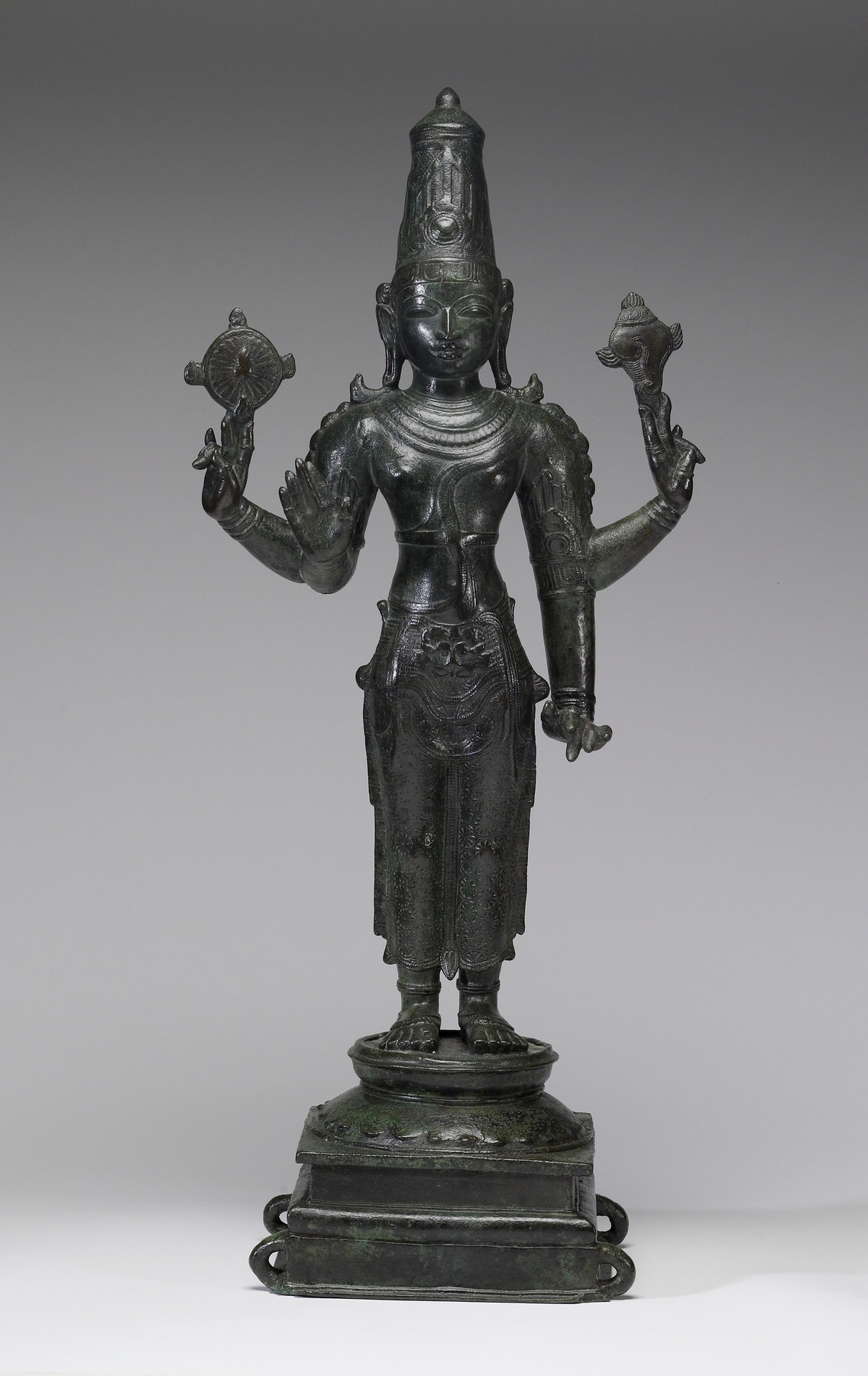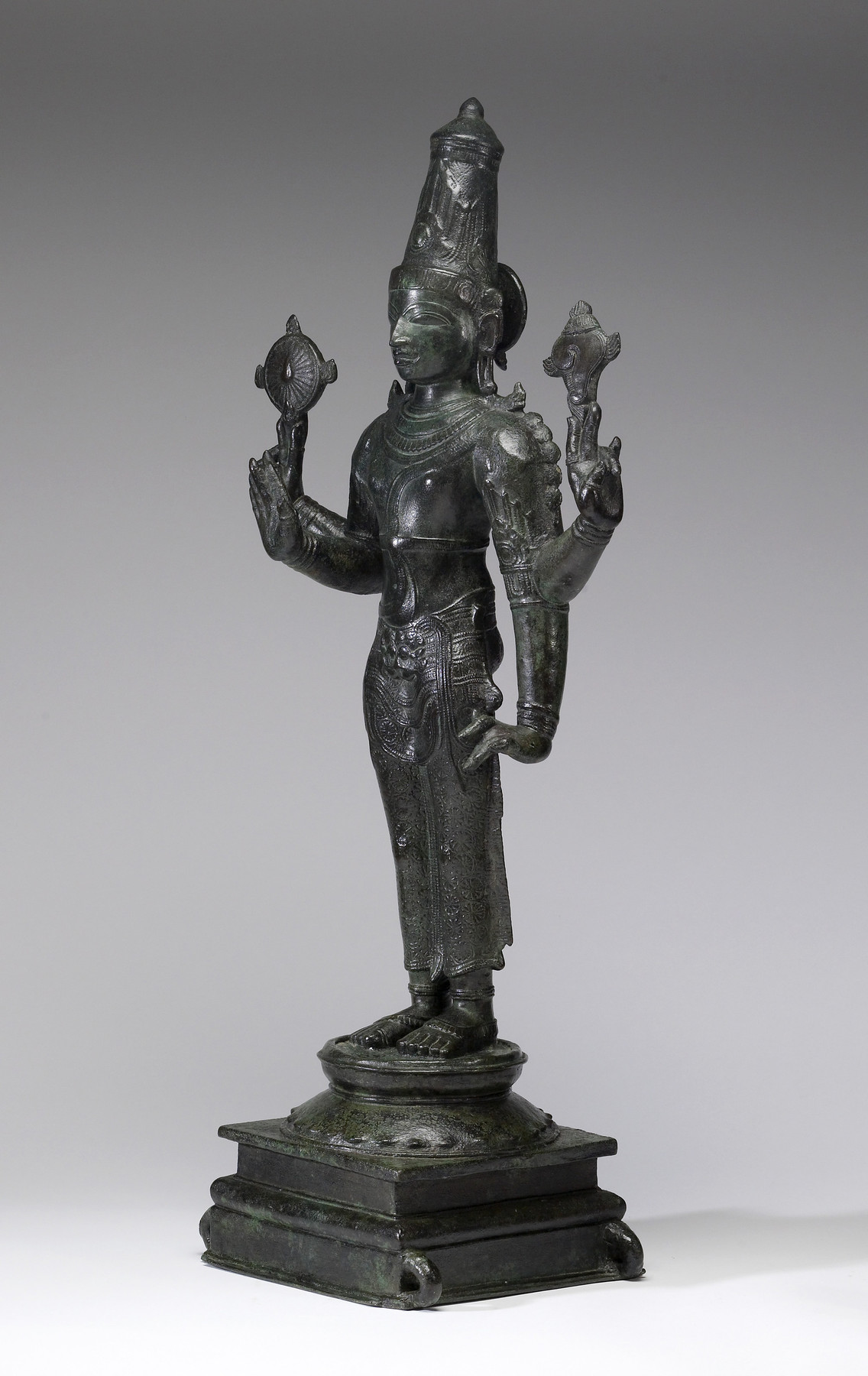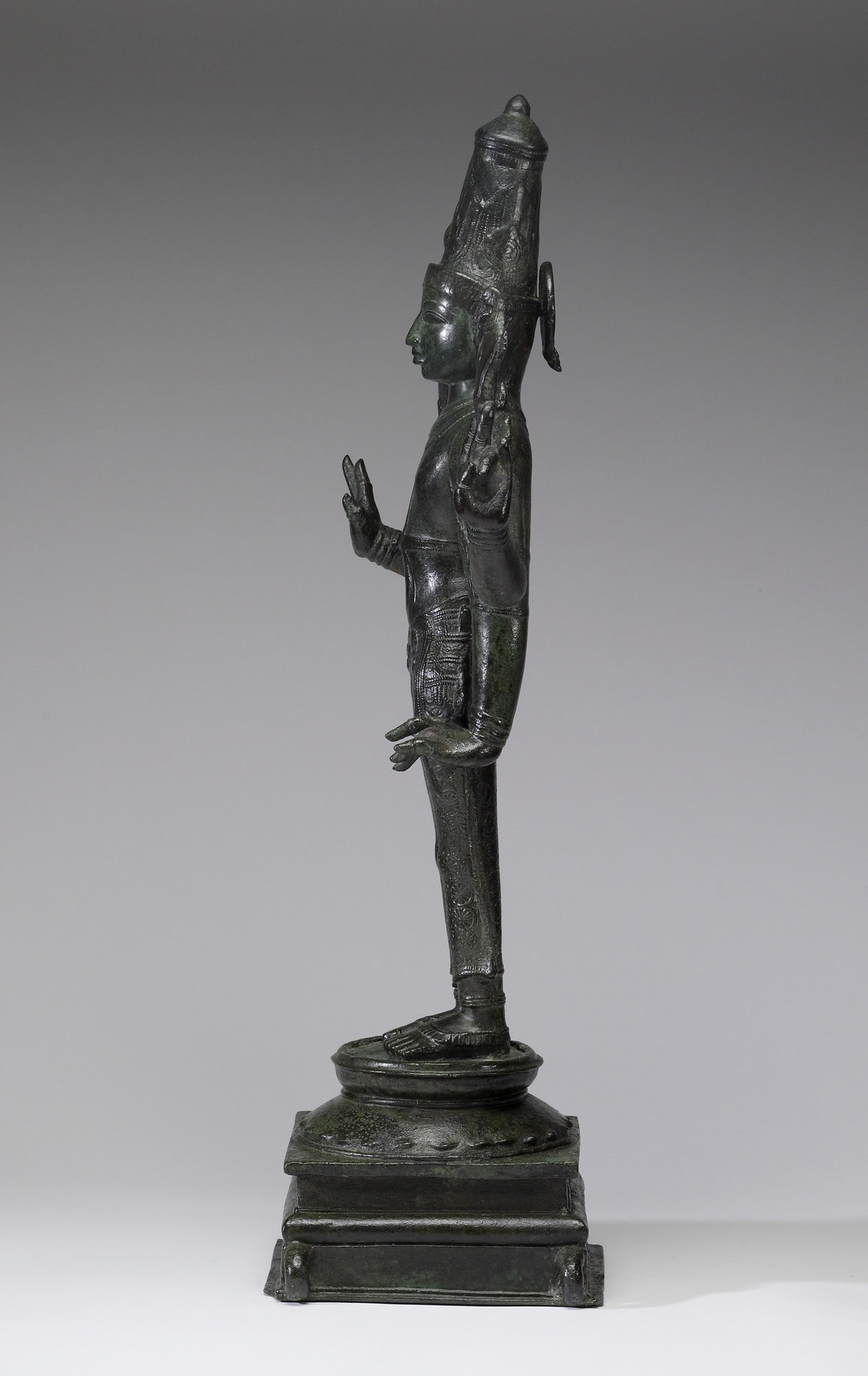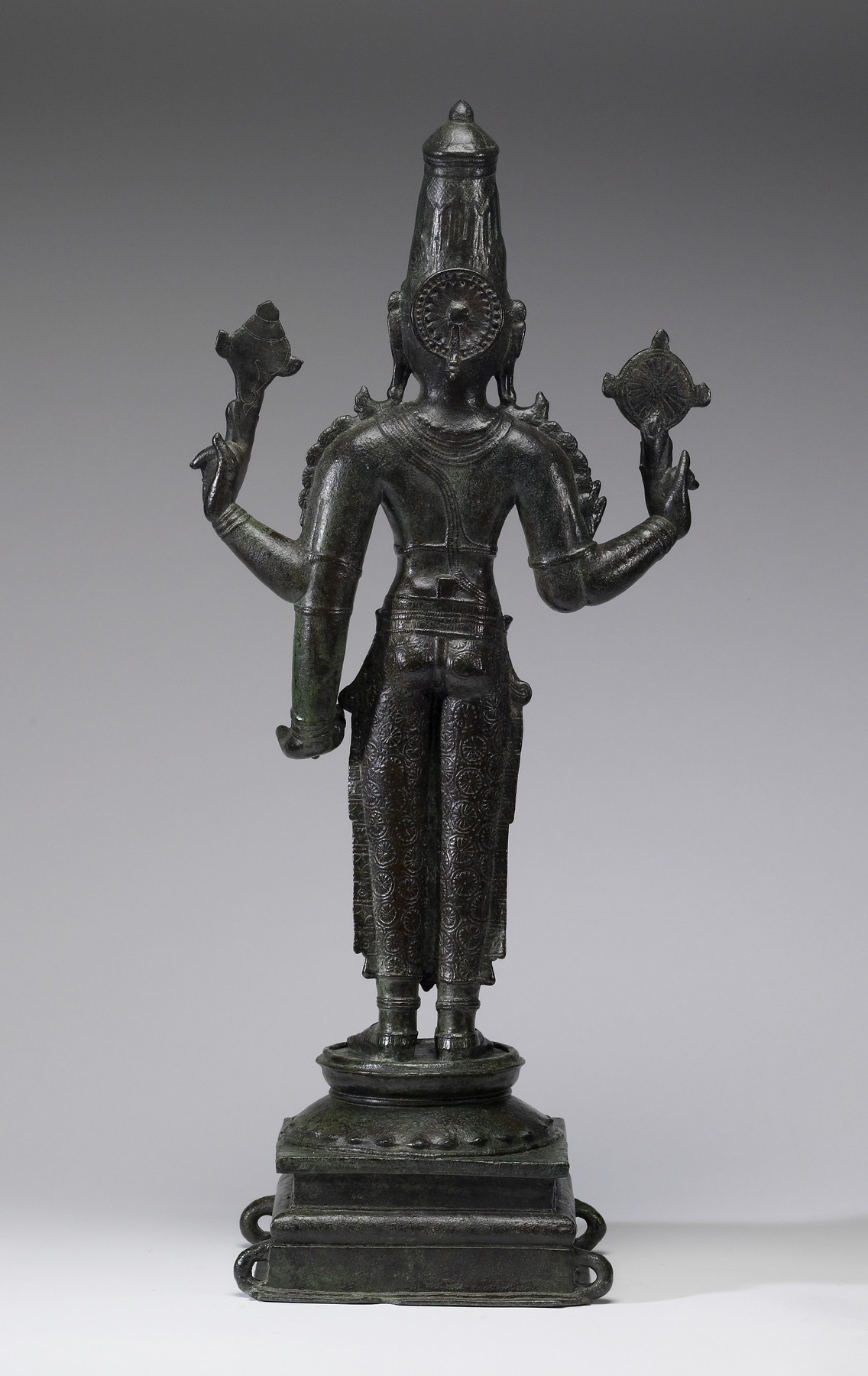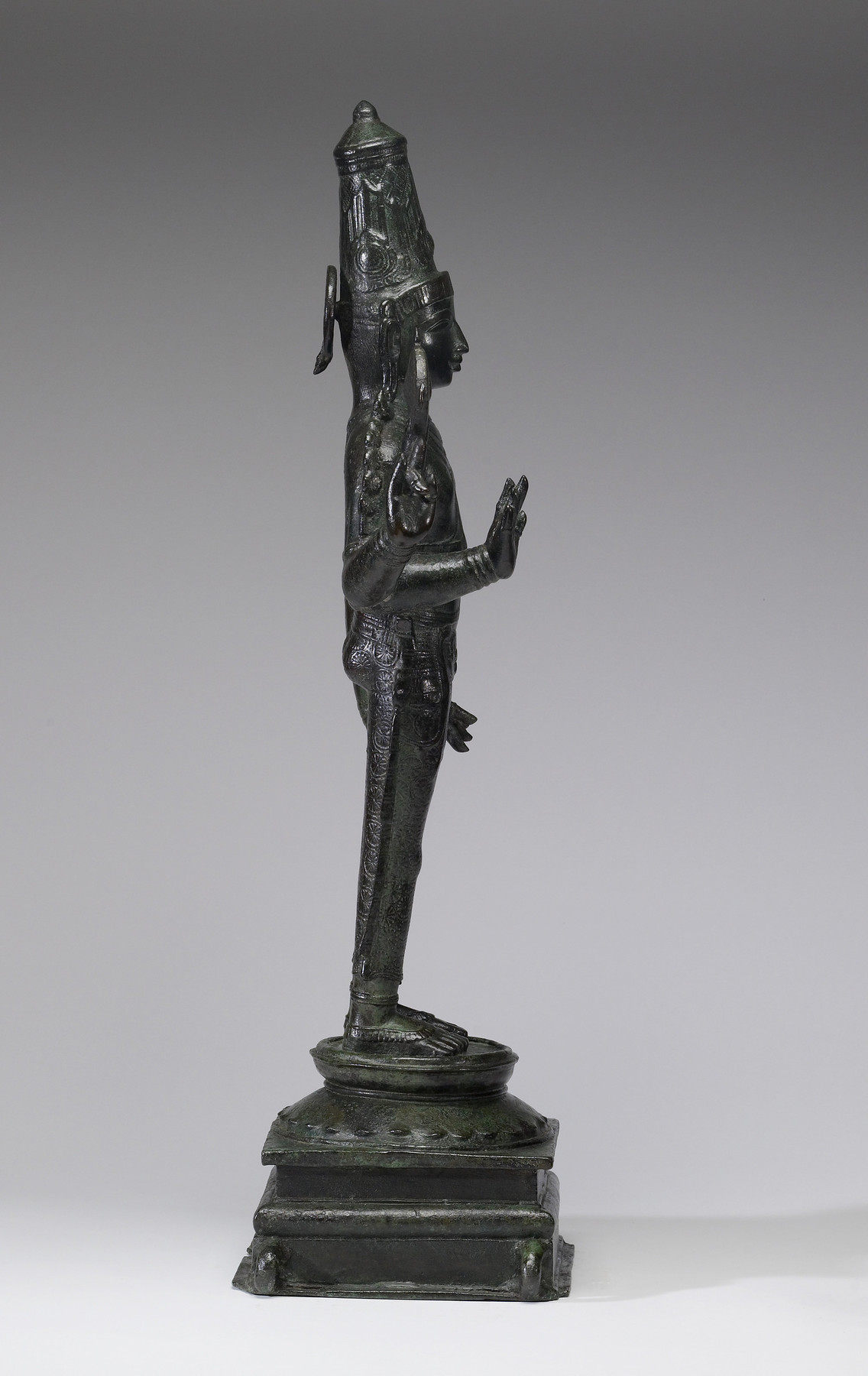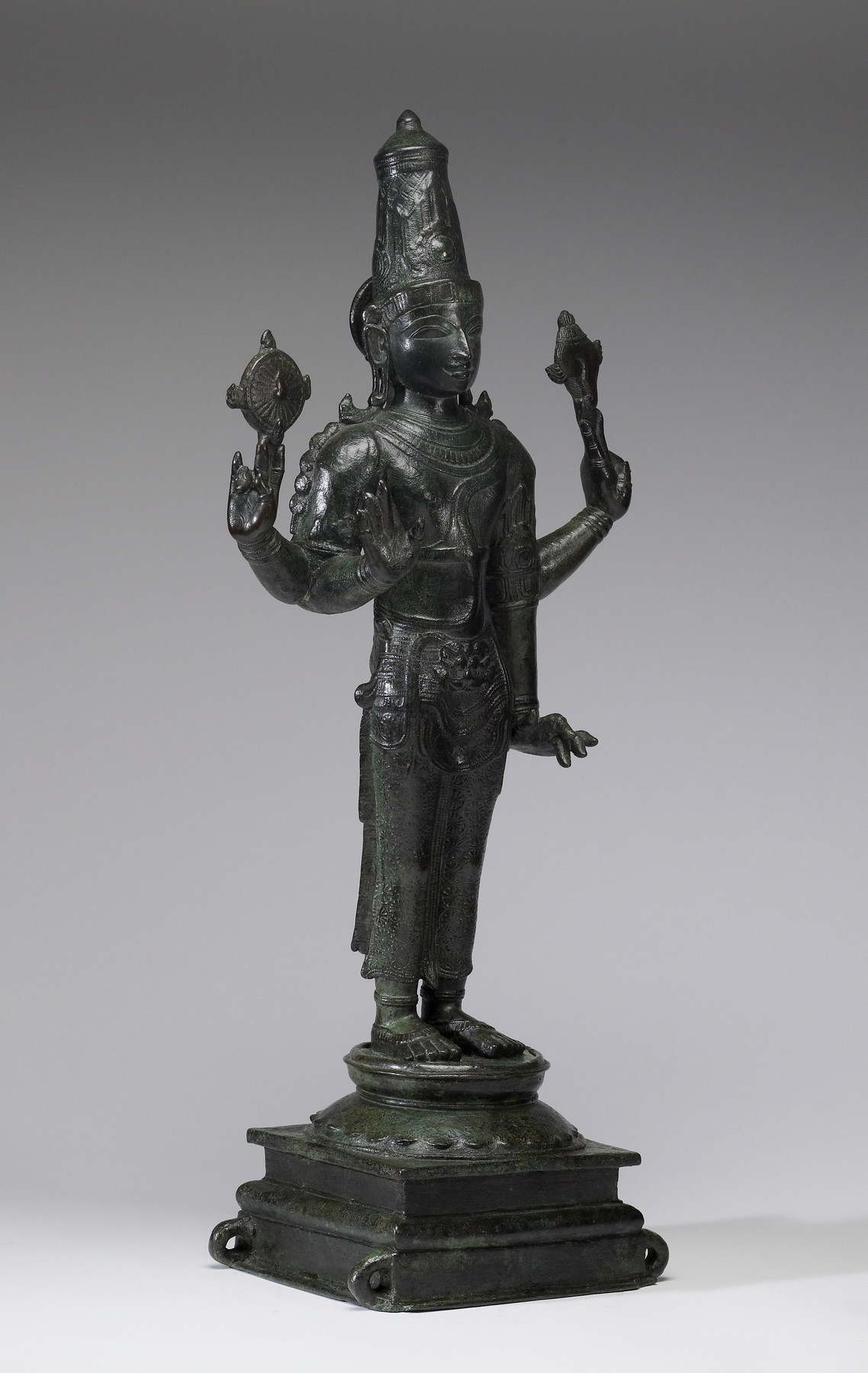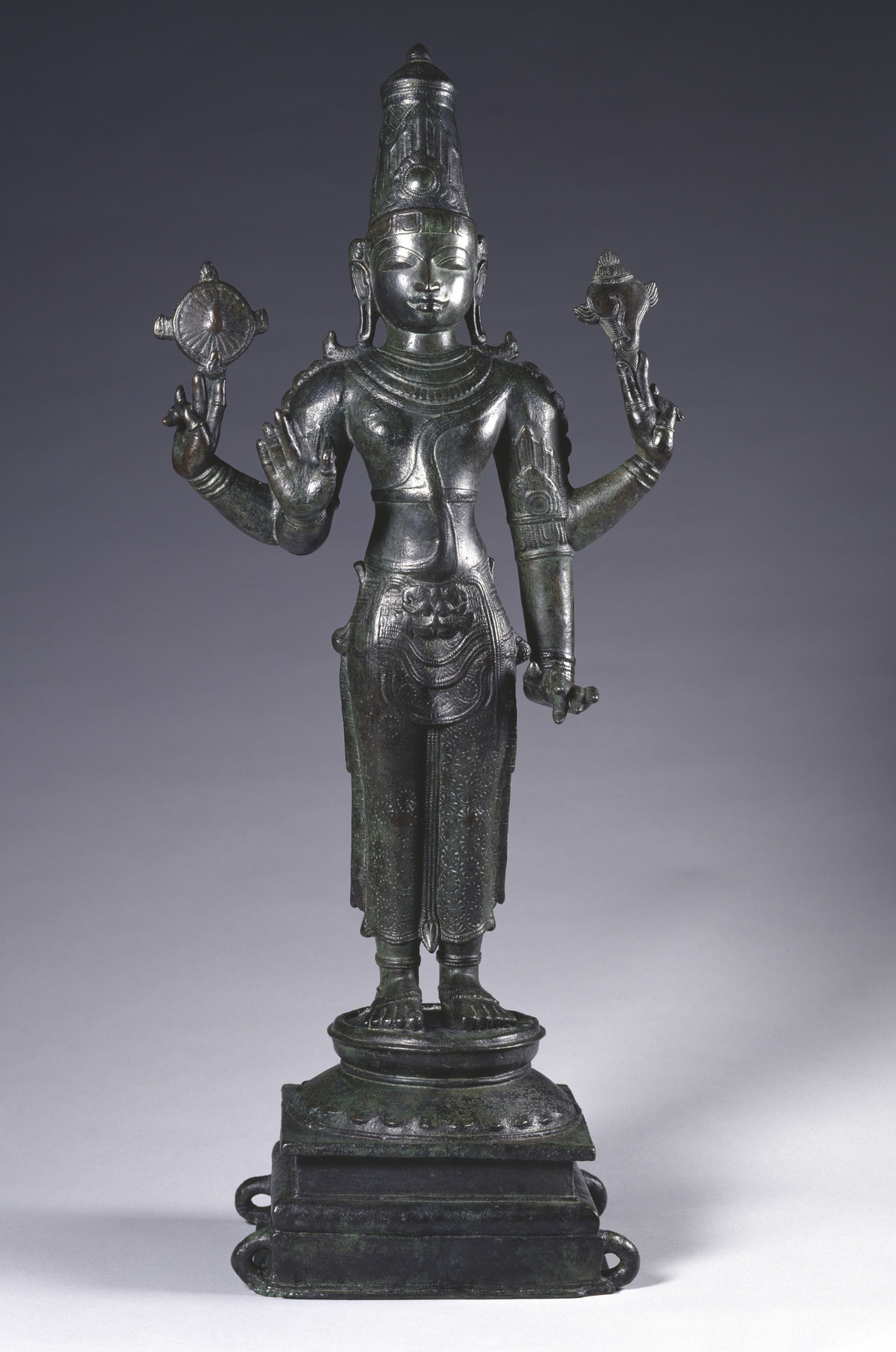Vishnu
(India, Nepal, and Tibet)
Here, Vishnu, preserver of cosmic order, wears a tall crown and royal dress while holding his radiant conch shell and discus; his lowered hand once rested on his club. The small triangle on his chest, called a "shrivatsa," signals the presence of Shri (also called Lakshmi), Vishnu’s consort and goddess of wealth. Many devotees of Vishnu—especially in southern India, where this sculpture was made—believe that Shri dwells within Vishnu and mediates between him (the supreme god) and human beings.
Widely admired today for their craftsmanship, this festival bronzes was produced in southern India, mostly in the state of Tamil Nadu, during the Chola dynasty (9th–13th century). The Chola kings and their people spoke Tamil; the language continues to be used in southern India. Part of a rich and still living tradition of casting solid metal sculpture in South India, this image of Vishnu was made using the lost-wax casting technique. First, a model of the final sculpture is created from a mixture of wax and resin. Every detail that is seen in the cast metal sculpture is captured in this wax-resin model. The model is then encapsulated in a mold, leaving an opening at its base. The mold is heated, which solidifies the mold material, while the wax within is melted and poured out. The mold is then inverted, metal is melted in a crucible, and the molten metal is poured into the void left by the melted wax. Once cooled, the mold is broken, revealing the cast metal sculpture.
Provenance
Provenance (from the French provenir, 'to come from/forth') is the chronology of the ownership, custody, or location of a historical object.
Kevorkian Collection, no.237; Sale, Parke Bernet, New York, New York, December 8 1967; purchased by John Ford, New York, 1967; given to Walters Art Museum, 2004.
Exhibitions
| 2001-2003 | Desire and Devotion: Art from India, Nepal, and Tibet in the John and Berthe Ford Collection. The Walters Art Museum, Baltimore; Santa Barbara Museum of Art, Santa Barbara; Albuquerque Museum, Albuquerque; Birmingham Museum of Art, Birmingham; Hong Kong Museum of Art, Hong Kong. |
Conservation
| Date | Description | Narrative |
|---|---|---|
| 10/31/2017 | Examination | stabilized |
| 10/31/2017 | Examination | Treated with benzotriazole for bronze disease. Reduced wax coating overall. |
Geographies
India, Tamil Nadu (Place of Origin)
Measurements
H: 27 3/4 × W: 12 3/16 × D: 7 7/8 in. (70.5 × 31 × 20 cm)
Credit Line
Gift of John and Berthe Ford, 2004
Accession Number
In libraries, galleries, museums, and archives, an accession number is a unique identifier assigned to each object in the collection.
In libraries, galleries, museums, and archives, an accession number is a unique identifier assigned to each object in the collection.
54.3020

